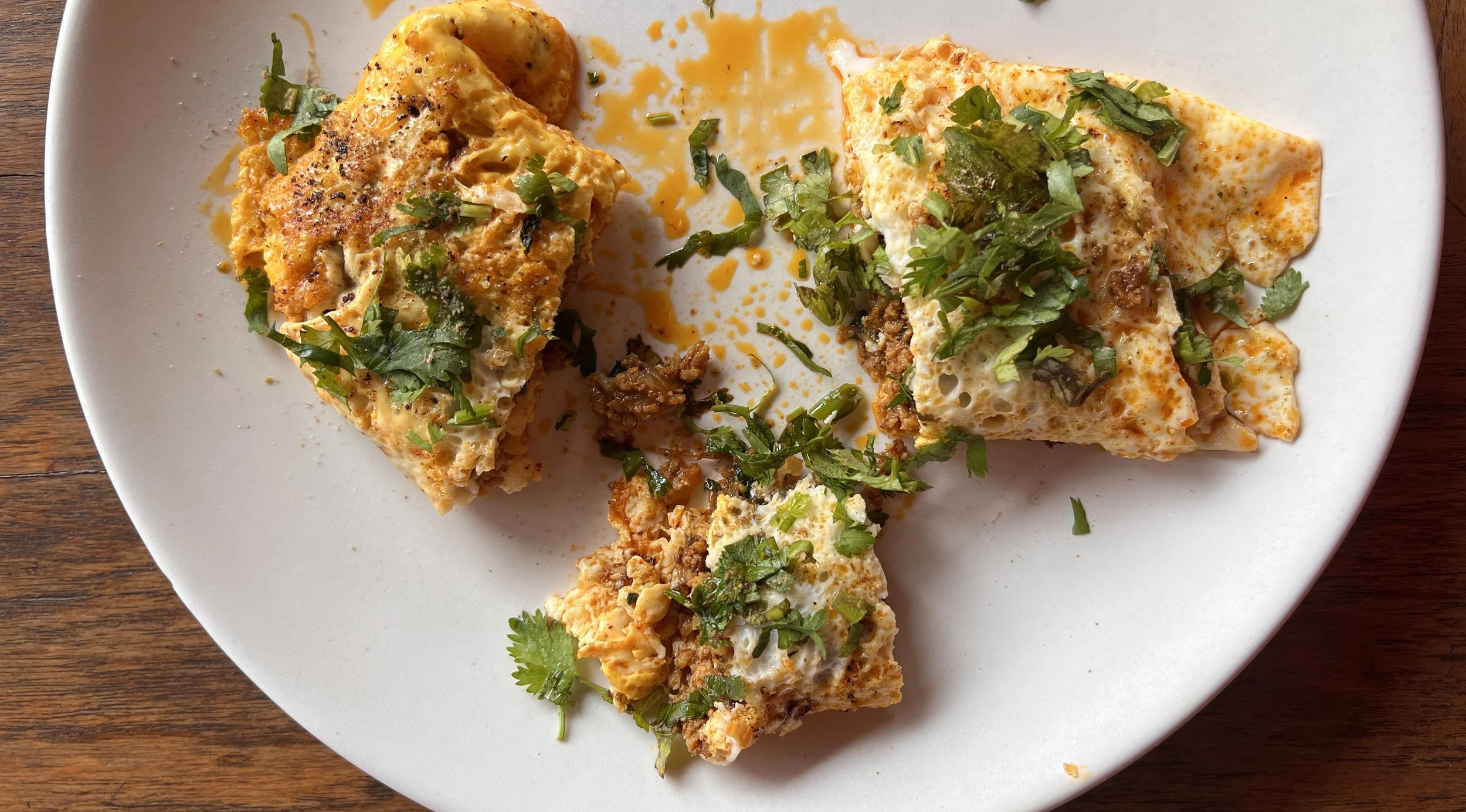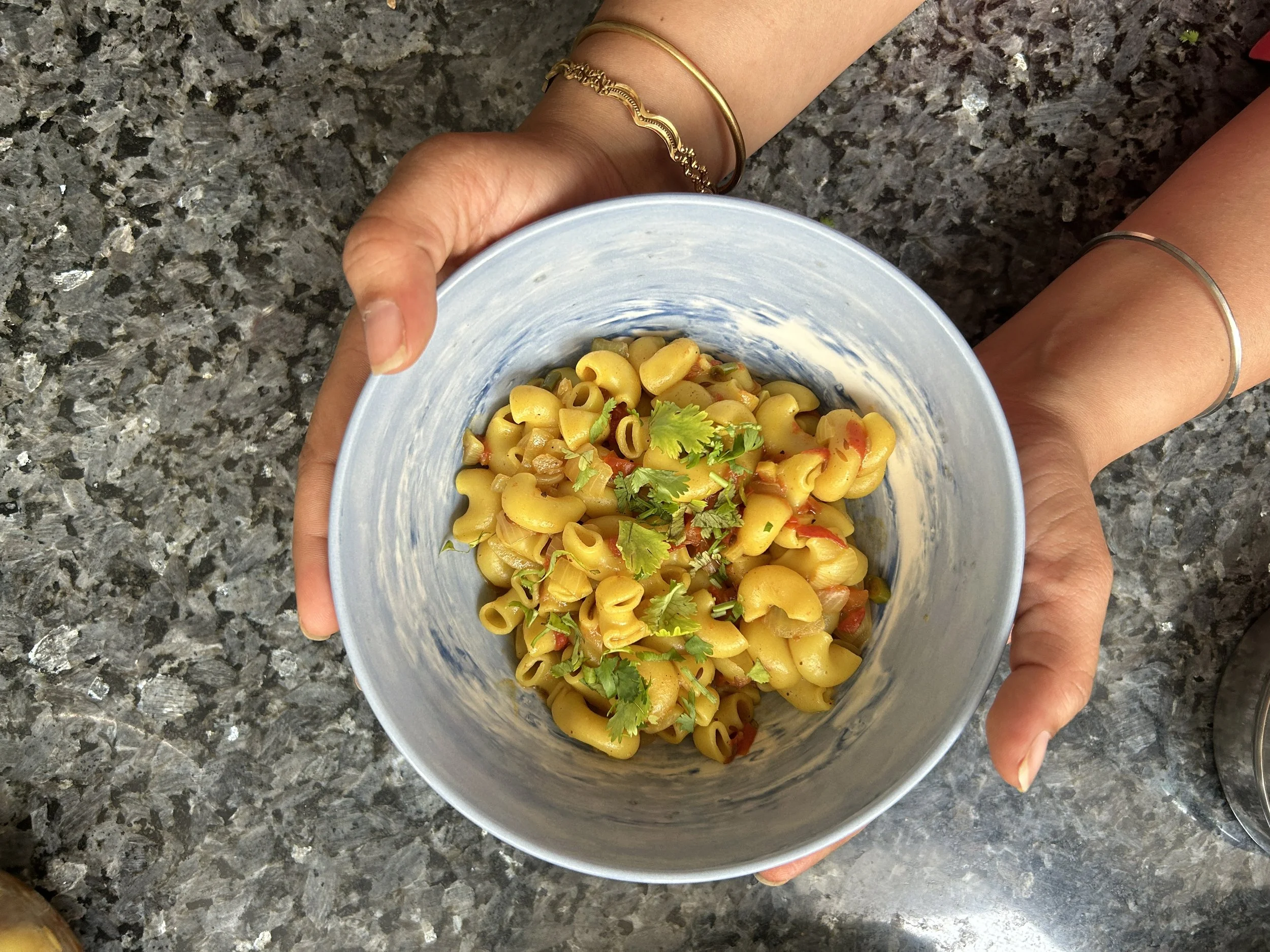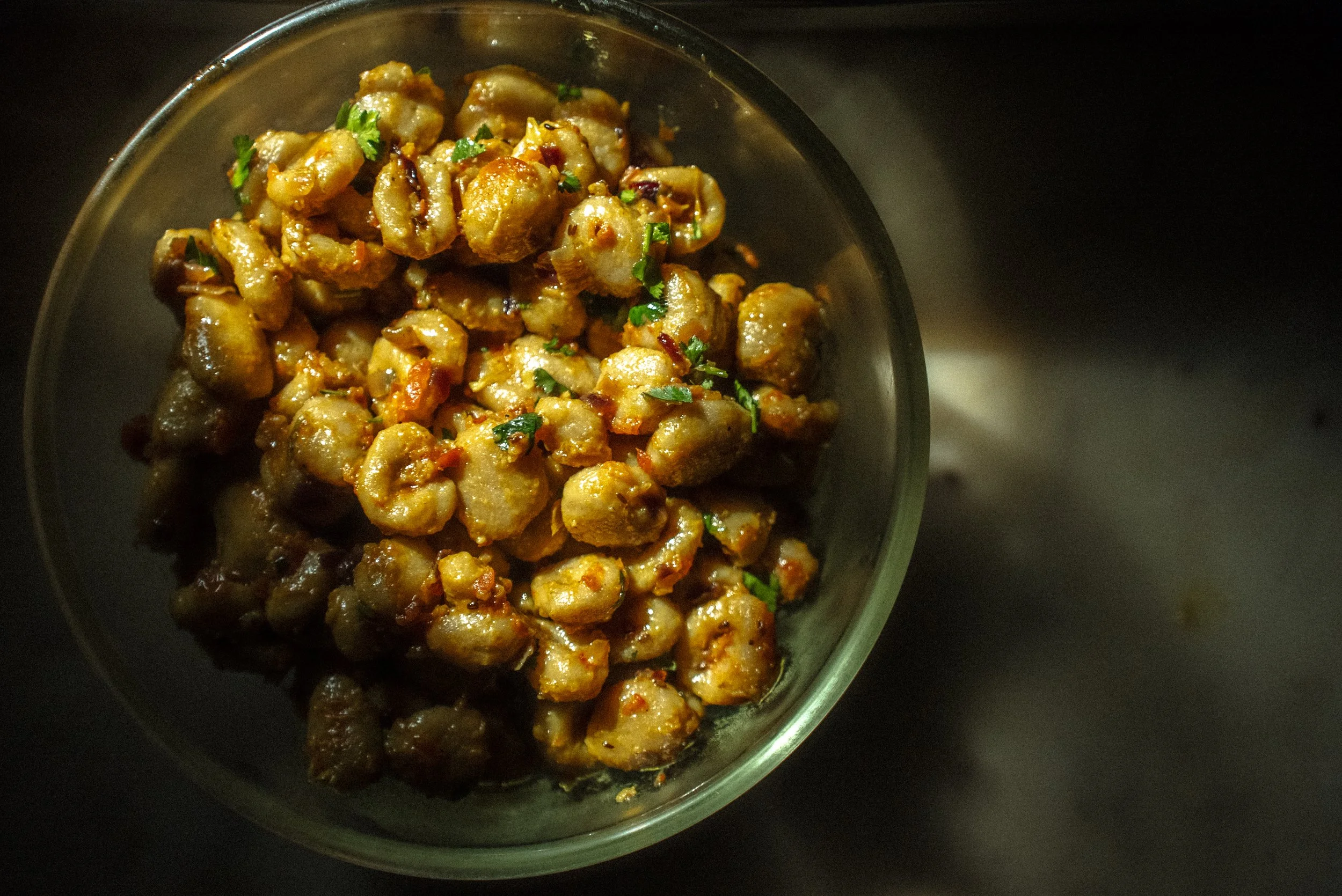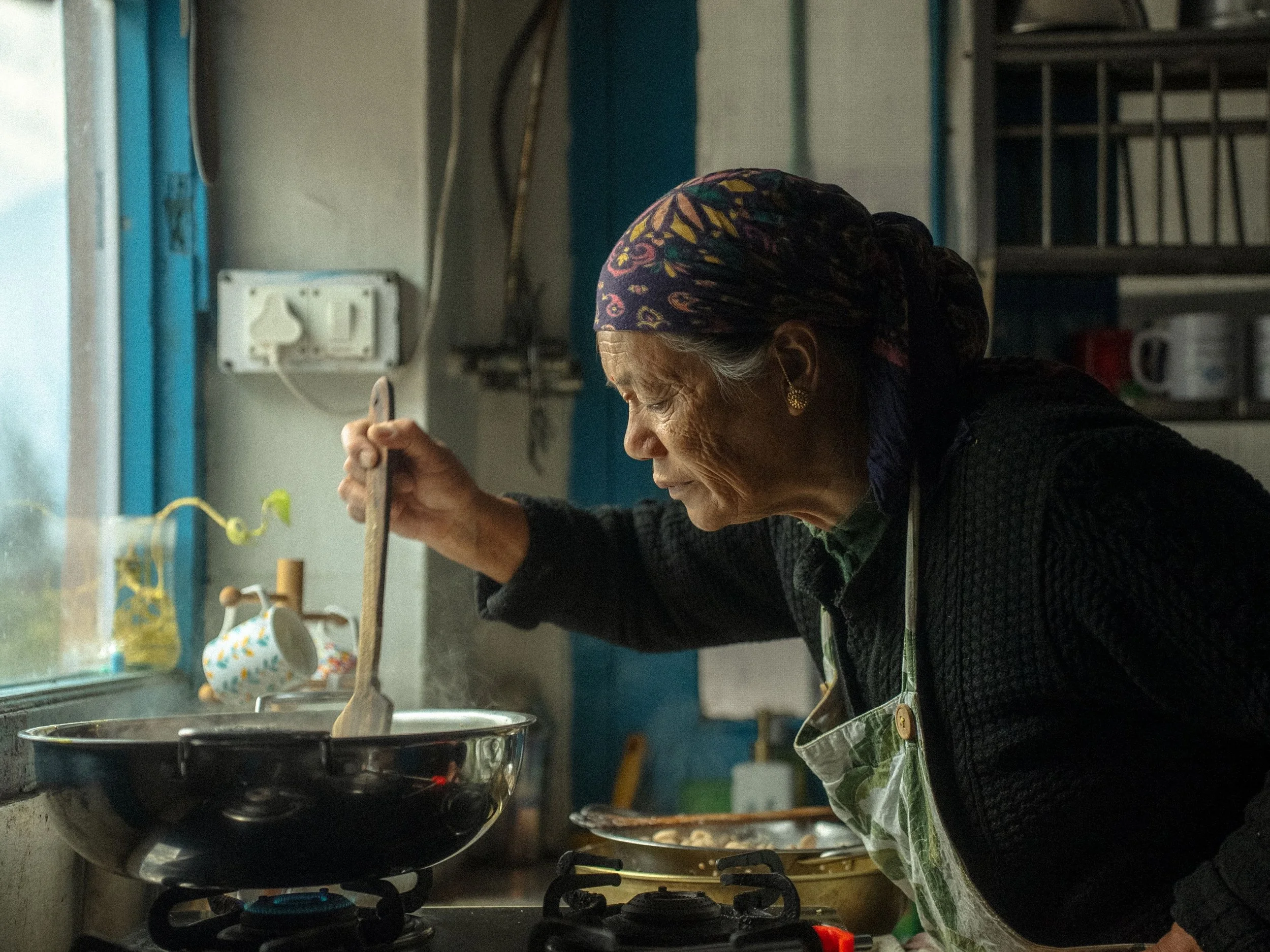#1000Kitchens Recipe Drop: Dangra-chi Kanji
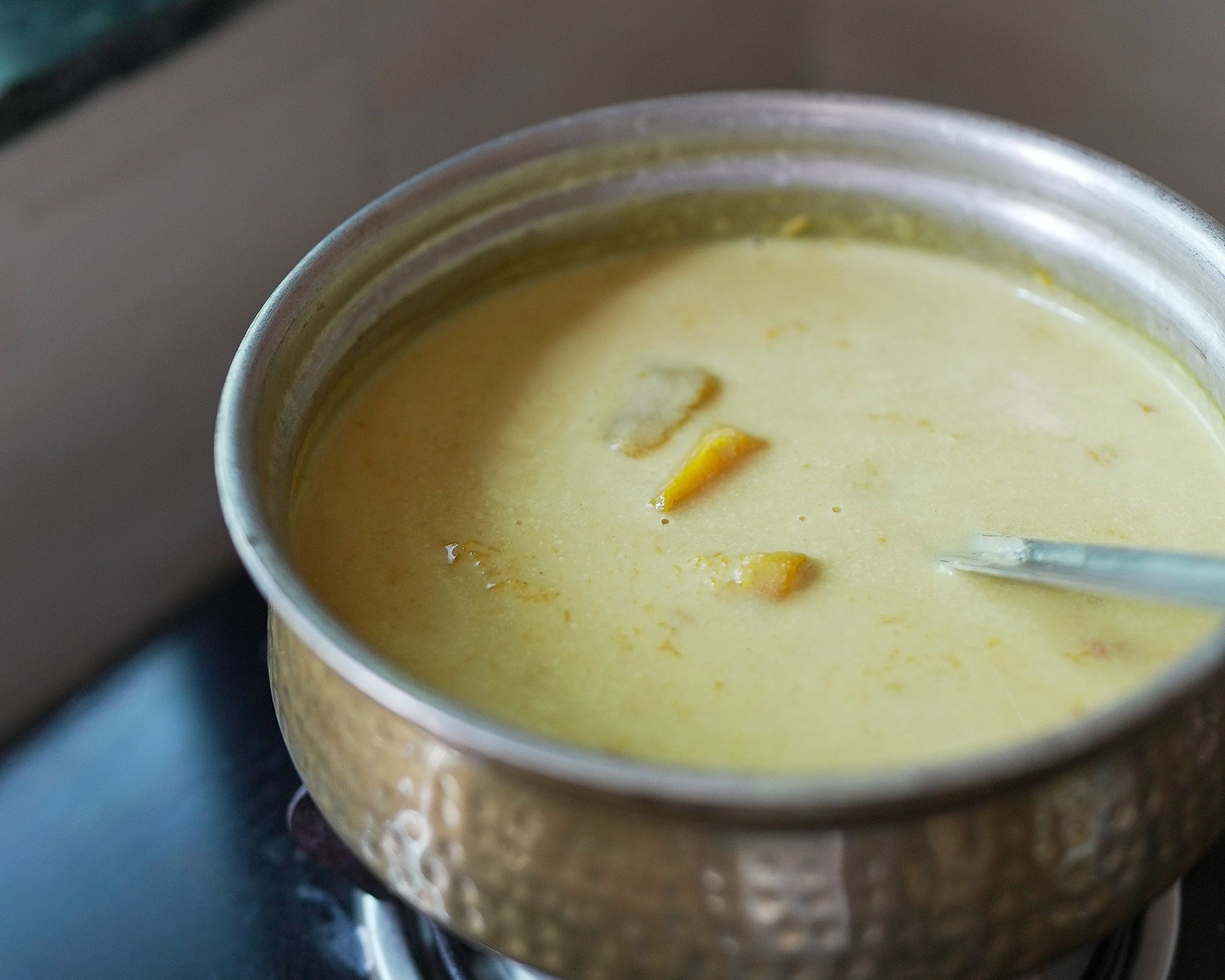
Each koliwada, even each household within a community, has recipes of their own that remain within, they aren’t written or documented. Several have faded away with time. A lot of the recipes include ingredients that grew near the community back in the day. In the case of some recipes, with concretisation, those ingredients become hard to find and families eventually stop making them.
Activist-artist-archivist Kadambari Tandel’s dangra-chi kanji is one such recipe. It highlights the dried seed of the bafli shrub, which is found growing in the jungles around the community settlements. Fiber, good fat, iron, antioxidants, white protein, and native herbs, fruits, and spices that help with digestion, blood sugar, and heart health — as Kadambari breaks down the components of what she keeps referring to as the family’s comfort food, it starts to dawn on us that comfort, in this case, likely has meanings beyond nostalgia and familiarity.
Clearly, the ancestors, centuries ago and despite their limited means, knew what they were doing. “At times growing up, we’d get to eat this when they [grandmother or mother] would be running late or needed a shortcut dish.” The dish, with the addition of prawn or dried bombil, is also made during Pitra Paksha, a 16-day lunar cycle to honor the ancestors. Much like in several coastal communities across the country, the catch from the sea is classified as vegetarian.
Kadambari talks about the significance and context of the dish in her life: “It is easy. It is affordable. It is nutritious. It is a complete meal in itself. Pumpkin is always available these days. If it’s not, it can be replaced with bottle gourd or even drumsticks. You can choose to skip prawns entirely. In certain seasons or when it needs to be made immediately, dried bombil soaked in hot water can replace the prawns. It’s the community’s go-to food.”
This is a #1000Kitchens feature. You can read the full story, here.
KADAMBARI TANDEL’S RECIPE FOR DANGRA-CHA KANJI
Ingredients
500 g pumpkin aka dangar [the variant with the hard, green skin]
1 freshly grated coconut
4 tbsp rice flour
1 tsp turmeric powder
½ tsp asafoetida
4 light green chillies, stems removed
2-3 dark green chillies, stems removed
3-4 pieces bafli
5 large or 8-9 regular-sized garlic cloves
5-6 pieces fresh kokum
Salt to taste
Water
200 g prawn (recommended but optional) with tail and a few heads, for more flavour.
Method
Leave kokum pieces to soak in a small bowl of hot water. Squeeze and extract a runny paste. Discard the skin.
Peel the pumpkin and chop it in large 2-3 inch-sized chunks. Pressure-cook the pumpkin chunks with half a teaspoon of turmeric and salt till you hear the whistle go off thrice. Leave the cooker with the lid closed for at least 20 minutes.
Use a glass of water to grind the grated coconut, bafli, garlic cloves, asafoetida, light and dark green chillies to a thick paste. Pass the paste through a sieve and extract thick coconut milk (first press). Squeeze the coconut mixture in the sieve to ensure you get all the milk you can.
Grind the coconut scrapings/ pulp left in the sieve using another glass of water. Strain and squeeze the mix to extract a glass of thin coconut milk (second press).
In a bowl, add half a spoon of rice flour and slowly stir in water by the teaspoon to form a thick paste. Add the remaining rice flour and water as you continue to stir ensuring the paste is runny with no lumps.
If using prawns, add them to the water left over in the cooker after removing the pumpkin chunks and give them a quick boil.
Add the pumpkin chunks, the second press (thin) of the coconut milk and a glass of water to a large pot. Place the pot on a slow burner and gently stir the pot as the mixture starts to heat up. Low heat, used through the entire cooking process, is key to ensuring the coconut milk does not split. Add the second press of the coconut milk as you continue to stir. Leave the pot to simmer for a couple of minutes before gently stirring in the rice flour paste, followed by the remaining half a teaspoon of turmeric powder.
As the mixture comes to a slow boil and starts to thicken, slowly add the prawns along with the water it was boiled in.
Another three to four minutes later, drizzle the kokum paste into the pot. Be gentle with this step; sour kokum can split the coconut milk if it’s not stirred in gently or if the burner flame is too high.
Let the mix come to a final boil; another 2-3 minutes. Taste and adjust salt, if needed.
Turn off the heat, cover the pot with a lid and let it rest for at least 15 minutes.
Tips: The locally-found, small or medium-sized, rust/ orange prawns work best with the dish. The consistency of the dish typically resembles a more viscous dahi kadhi than a Kerala Stew or Sambhar. You can adjust the consistency according to your preference by adding more water or reducing the rice flour quantity. You can adjust the kokum paste and green chilli quantities based on how much tang and heat you prefer.
Words by Yoshita Sengupta. Images by Nachiket Pimprikar. Illustration by Ananya Parekh.
Special thanks to our partners.
ALSO ON GOYA


